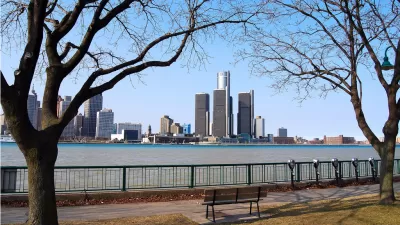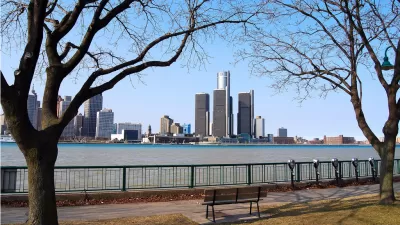The story of how Detroit became the largest US city to ever file for bankruptcy is a long and tangled one featuring many villains and several "if only" moments. The Detroit Free Press reviews 50+ years of financial history to set the record straight.
"An in-depth Free Press analysis of the city’s financial history back to the 1950s shows that [Detroit's] elected officials and others charged with managing its finances repeatedly failed — or refused — to make the tough economic and political decisions that might have saved the city from financial ruin," find Nathan Bomey and John Gallagher's in their lengthy investigative report on the city's path to insolvency. Their reporting reveals several surprises, including villains absolved and supposed good actions condemned.
"The numbers, most from records deeply buried in the public library, lay waste to misconceptions about the roots of Detroit’s economic crisis. For critics who want to blame Mayor Coleman Young for starting this mess, think again," they write. "And Wall Street types who applauded Mayor Kwame Kilpatrick’s financial acumen following his 2005 deal to restructure city pension debt should consider this: The numbers prove that his plan devastated the city’s finances and was a key factor that drove Detroit to file for Chapter 9 bankruptcy in July."
"When all the numbers are crunched, one fact is crystal clear: Yes, a disaster was looming for Detroit. But there were ample opportunities when decisive action by city leaders might have fended off bankruptcy."
FULL STORY: How Detroit went broke: The answers may surprise you - and don't blame Coleman Young

Planetizen Federal Action Tracker
A weekly monitor of how Trump’s orders and actions are impacting planners and planning in America.

Restaurant Patios Were a Pandemic Win — Why Were They so Hard to Keep?
Social distancing requirements and changes in travel patterns prompted cities to pilot new uses for street and sidewalk space. Then it got complicated.

Map: Where Senate Republicans Want to Sell Your Public Lands
For public land advocates, the Senate Republicans’ proposal to sell millions of acres of public land in the West is “the biggest fight of their careers.”

Maui's Vacation Rental Debate Turns Ugly
Verbal attacks, misinformation campaigns and fistfights plague a high-stakes debate to convert thousands of vacation rentals into long-term housing.

San Francisco Suspends Traffic Calming Amidst Record Deaths
Citing “a challenging fiscal landscape,” the city will cease the program on the heels of 42 traffic deaths, including 24 pedestrians.

California Homeless Arrests, Citations Spike After Ruling
An investigation reveals that anti-homeless actions increased up to 500% after Grants Pass v. Johnson — even in cities claiming no policy change.
Urban Design for Planners 1: Software Tools
This six-course series explores essential urban design concepts using open source software and equips planners with the tools they need to participate fully in the urban design process.
Planning for Universal Design
Learn the tools for implementing Universal Design in planning regulations.
Heyer Gruel & Associates PA
JM Goldson LLC
Custer County Colorado
City of Camden Redevelopment Agency
City of Astoria
Transportation Research & Education Center (TREC) at Portland State University
Camden Redevelopment Agency
City of Claremont
Municipality of Princeton (NJ)




























